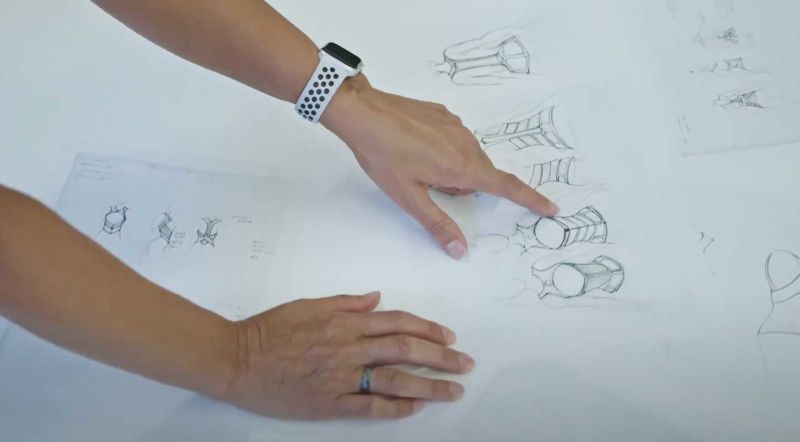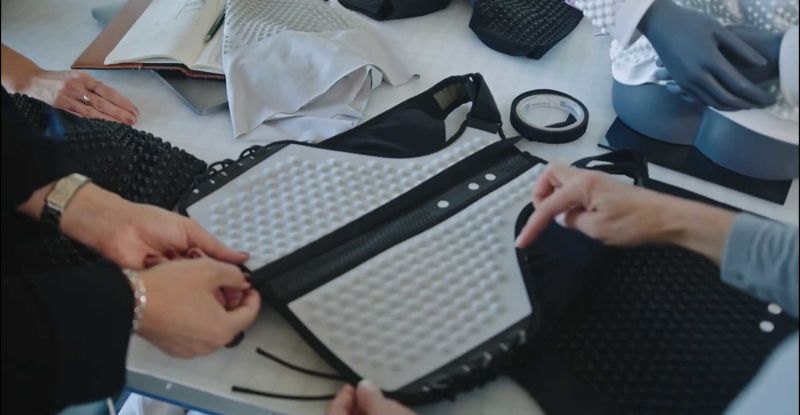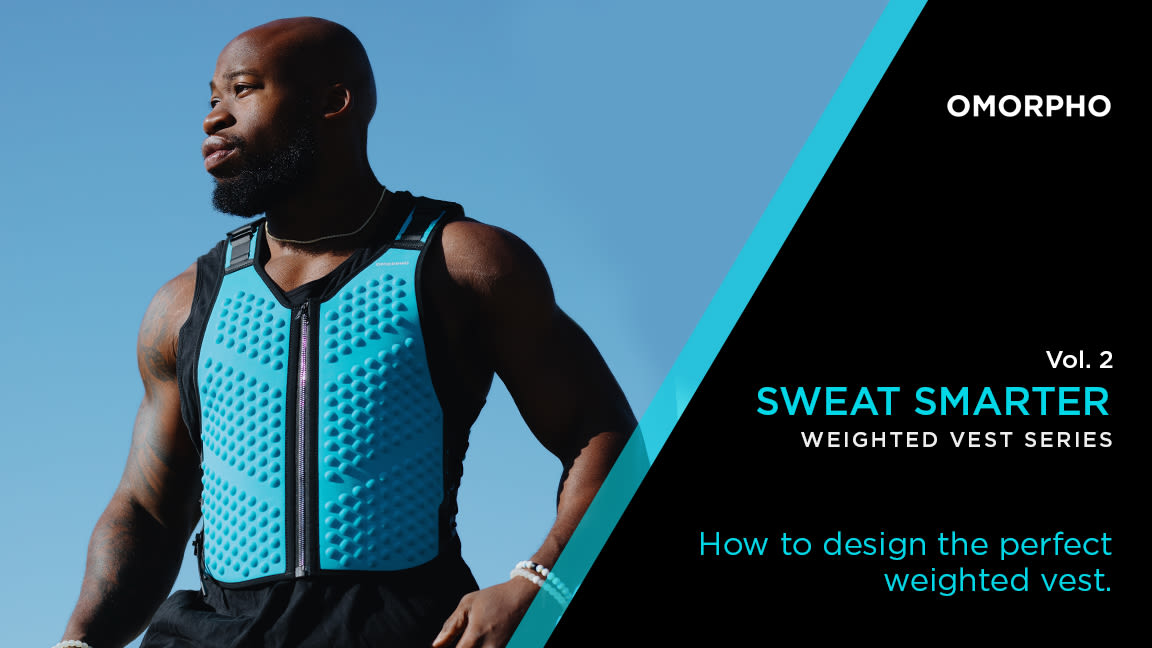While many types of weighted vests exist, we at OMORPHO realized that we could make a much better version. Using our combined expertise, we set out to create an OMORPHO weighted vest with an improved fit, durability, mobility, inclusivity, appearance, and ease of use. The end result is the OMORPHO G-Vest, a more design-forward and approachable solution created to help you get fitter, faster, and stronger no matter where you work out.
As a designer, I always say that design has to do several things. It starts by having an in-depth understanding of the functional needs of the end user, including the world they move in. From there, we aim to create a design language that goes beyond their expectations and connects with them on an emotional level. While the performance and the quality of the product are the key requirements, the visual part is what often draws people in initially.
It was important to us that the visual design feels modern as a piece of sportswear and stands out on its own in the best possible way. Most weighted vests on the market felt very military-like and not like an extension of your current workout gear. We made sure to make style a big part of our attraction and offering through design and ultimately having fun with color as well.

RESEARCH
Our co-founder and CEO Stefan Olander, along with other employees and testers, worked out in nearly every weight vest design available. From there, we made lists of pros and cons to understand what worked and what didn’t work.
This process involves not just me as a designer but also our engineering and innovation teams. Crucially, it involved OMORPHO’s Head of Engineering and Creation, Irena Ilcheva. We worked together until we had the best functioning and most beautiful product possible. While we collectively focused on weighted vest mechanics, we also thought about the common routines most of us follow. How much weight does the vest really need? How do we make the vest adjustable? How do you wash a vest?
IDEATING
We ultimately realized that innovation was greatly needed among conventional performance vests, particularly around fit and function. For too long, it had been made for (and marketed to) mainly men and professional athletes. In reality, everyone can benefit from weighted fitness vests and their resistance training attributes.
After completing our research, we started dreaming, what if we designed a better workout vest that could be used by everyone, no matter who they are, their fitness level, their sport, if they’re training for the Olympics, or if they simply enjoy hiking or walking their dog? What if we simplified the use and interaction typically associated with resistance training? Better yet, what if we made a weighted vest that is enjoyable to work out in? We outlined the problems we were solving for and got to work.
Some elements of functionality we focused on specifically were making sure that the weights were evenly distributed and perfectly balanced. We wanted the vest to not impede natural movement, allowing you to continuously workout within your sport of choice. With that, it should also fit like a second skin and sit close to the body.

PROTOTYPING
I like to design according to a 3-step rule: Attract, Engage, and Capture. “Attract” is about the appearance of a product and how it grabs a consumer’s attention. For the G-Vest, we started with the overall proportion, as well as the weighted elements being a visual novelty that is smoothly incorporated onto an even surface. The shape, materials, and hardware have a modern appearance that feels understated yet strong.
“Engage” is about getting closer to the product, seeing the details, feeling its smoothness and durability, and noticing the adjustability via side cinching and shoulder straps. This phase of obsessing over the details helps consumers have early, impactful connections to the product and brand. “Capture” is about the function of the product, including making it not too heavy (or too light) for one’s movement. From the first time the consumer puts it on, everything that attracted them to it should be validated. We worked very hard to achieve this with the G-Vest!

DELIVERING
Our earliest, crude prototypes helped us confirm our initial thoughts and objectives, as well as figure out the right amount of weight. We worked with OMORPHO’s Head of Science, Dr. Erin Feser, to create a testing format, and the results were incredible. In simple terms, adding a small to moderate amount of weight to your workout routines gives you a significant boost and helps you maximize the output of your invested time and energy. Who doesn’t want that?
We also worked very hard to refine the comfort of the G-Vest. We wanted it to move well with every type of body and feel like the weight is well-distributed to work dynamically with your muscle groups. We tested various materials to see what worked best against the skin and with abrasion, heat, and sweat. Another element that was important to us was the perfect fit: for that, we made sure that the vest was fully adjustable to your body and personal preference. And lastly, we ensured that it was easy to put the vest on and take it off with one quick zipper draw. The end result feels modern, fits well, and has the optimal weight.

